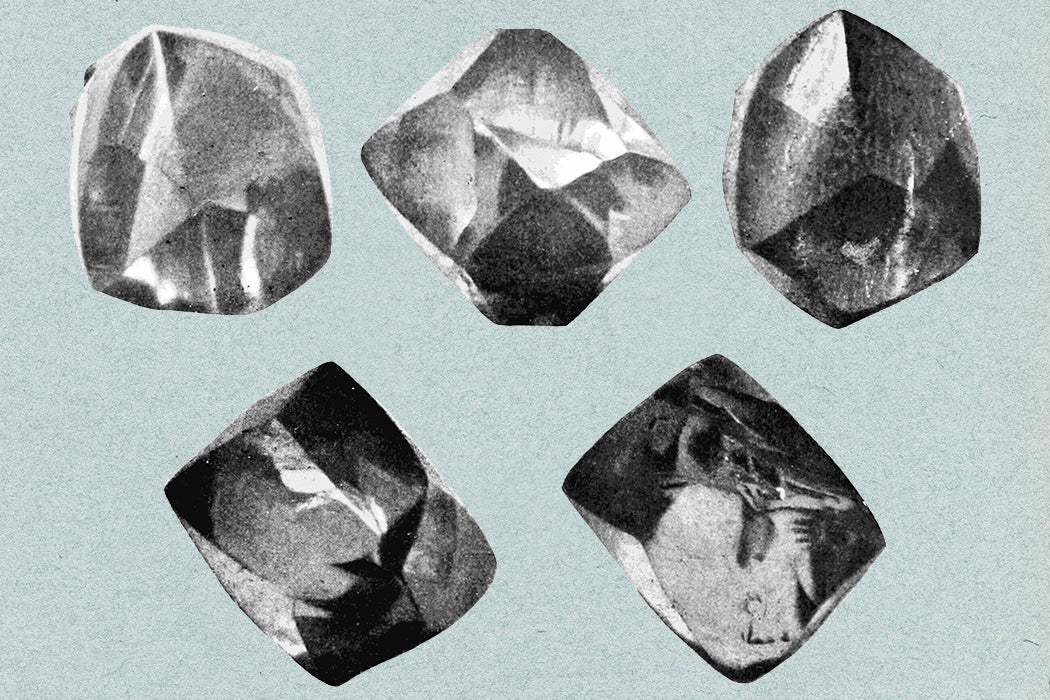In the mid-to-late 1800s, Wisconsin residents had no idea that they were walking on a treasure. Today, the state is known by scientists as “the most prolific of the Great Lakes states in revealing diamonds,” legal scholar Mara Kent explains. But back then, no one had any idea. So it was huge news when, in 1893, a sixteen-carat yellow diamond was found in Eagle, Wisconsin. The Eagle Diamond, as it came to be known, would not only change how people thought of the state, but create a legal precedent and a mystery that has yet to be solved.
Eagle was close to the county’s many natural resources, and it was a popular tourist destination, bringing people wanting rejuvenating dips in the area’s lakes and springs. The location was also perfect for farming and manufacturing, and many big industries called the area home. But one particularly dry summer in 1876, water levels in Tom Deveraux’s well dropped. A local farmer, Deveraux hired help to deepen his well. It wasn’t an easy task.
“At that time, wells were dug by hand,” Kent explains, “and the workers had a difficult task: they had to dig through about twenty-five feet of loose gravel, four feet of clay and, finally, through a yellow matrix.”
Somewhere around sixty feet, the workers found an odd yellow stone. It was pretty, but nothing special. The workers gave it to a young girl who was playing in the yard. The girl was a relative of Charles and Clarissa Wood, tenant farmers living on Deveraux’s land. When she went back home, she left the stone with the Woods, where it remained for seven years, “in a box of collectibles that lay ‘gleaming in obscurity.’” People often commented on the stone, and finally, Clarissa decided to find out if it was worth something. She brought it to a jewelry store owned by Colonel Samuel Boynton and his son Charles, and, according to an 1899 article in The Journal of Geology, “while still ignorant of the real nature of the stone, she sold it to Mr. Boynton…for the sum of one dollar.”
As it turned out, even the Boyntons didn’t know what they had. Though the elder Boynton was a jeweler, he’d never seen an uncut diamond, and as Kent writes, in 1884, he took the stone to a gemologist in Chicago where he was informed that it was “a sixteen-carat yellow diamond, valued at approximately seven hundred to one thousand dollars.” Even more impressively, it was the largest diamond ever discovered in the United States.
Boynton’s mind went into high gear. If there was one diamond like this on the Deveraux farm, there had to be others. He kept his discovery a secret, and quietly purchased four-acres of land from Deveraux. Then he got to work. He hired a lawyer and diamond miners. The miners told him that what he had was “diamond bearing soil,” and that there were bound to be others. Hiding the operation as chicken farming to avoid questions from nosy neighbors, Boynton started mining. The secret soon got out, though, starting Eagle’s diamond rush. As Kent describes, “capitalists and miners flocked to the village to purchase all the property they could get a hold of. Property values rose over four times after the additional diamond discovery was made public.”
Meanwhile, just like everyone else, Clarissa Wood was discovering that the pretty rock was really worth something. She offered to buy it back for $1.10 (the ten cents for interest). Boynton refused, and Wood sued to get the diamond back, taking her case all the way to the Wisconsin Supreme Court where she ultimately lost. The Wood v. Boynton case is still taught in law schools today.
Weekly Newsletter
While the case was still on-going, Boynton, who’d been outed as a fraud after planting diamonds in his mine, sold the diamond to Tiffany and Company for $800. Tiffany never cut the diamond as ownership was in question, and so, much like it did in the Wood’s house, it kind of just hung around for a while. It was eventually sold to J. P. Morgan, who later donated it to the Museum of Natural History where it stayed until 1964.
But the Eagle Diamond has always been at the center of a great story, and it, of course, found itself part of another one. The same year it arrived at the museum, the diamond, along with a host of other famous gems, was stolen in a brazen heist led by notorious thief, Jack Murphy, aka “Murph the Surf”. The diamond has never been recovered, becoming a “brief but sparkling presence on the world stage.”







